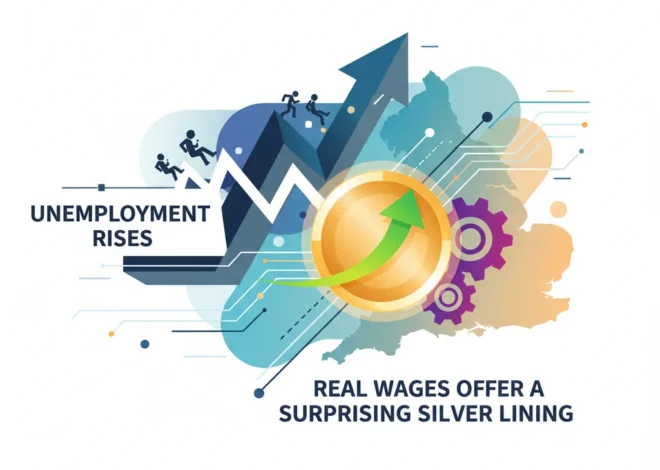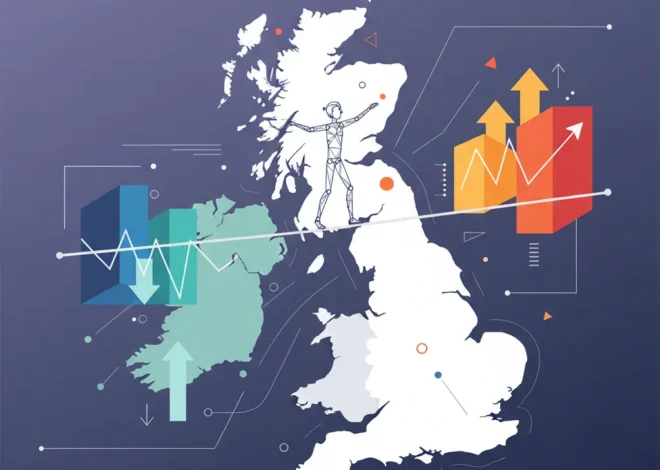
Beyond the Basics: Four Pillars of Financial Mastery in the Modern Economy
In a world of fluctuating markets and persistent economic headwinds, the age-old advice to “spend less and save more” can feel both overly simplistic and frustratingly out of reach. While the sentiment, recently highlighted by a BBC News guide, is the undeniable bedrock of financial health, it’s merely the first step on a much longer journey. True financial mastery in today’s complex economy requires a more sophisticated approach—one that transforms simple savings into strategic wealth creation.
This article will build upon that foundational advice, expanding four simple concepts into a comprehensive framework for investors, professionals, and anyone serious about building a secure financial future. We will explore how to move beyond basic budgeting to active cash flow management, transition from a saver’s mindset to an investor’s strategy, and leverage the powerful currents of financial technology to your advantage. This isn’t just about cutting costs; it’s about architecting a system for long-term prosperity.
Pillar 1: Master Your Cash Flow with Intelligent Budgeting
The first principle, often framed as “tracking your spending,” is more accurately described as mastering your cash flow. In an economic environment where inflation can silently erode purchasing power, understanding precisely where your money goes is not just a defensive move—it’s your primary offensive strategy. A budget isn’t a financial straitjacket; it’s a data-driven plan for allocating your resources toward your goals.
Modern budgeting transcends tedious spreadsheet entries. The rise of fintech has produced a suite of powerful applications that connect directly to your bank accounts and credit cards, automating categorization and providing real-time insights. This level of data allows you to identify spending patterns, plug financial leaks, and make informed decisions. Instead of just seeing that you spent $300 on dining out, you can see the trend over six months and calculate its opportunity cost—that $300 could have purchased a share of an index fund.
A popular and effective framework is the 50/30/20 rule:
- 50% to Needs: Housing, utilities, transportation, groceries.
- 30% to Wants: Dining out, entertainment, hobbies, travel.
- 20% to Savings & Investments: This is the crucial portion we’ll focus on heavily.
This rule provides a clear, actionable target. If your “Needs” exceed 50%, it’s a signal to examine larger fixed costs. If your “Wants” are creeping up, you know where to trim. But the ultimate goal is to protect and, if possible, expand that 20%, as it is the fuel for your entire wealth-building engine.
Pillar 2: Automate Your Wealth Engine, Not Just Your Savings
The second principle is to “save more money.” A more powerful framing is to “pay yourself first.” This psychological shift prioritizes your future self over immediate discretionary spending. The most effective way to achieve this is through automation. By setting up automatic transfers from your checking account to your savings and investment accounts on payday, you remove willpower and decision fatigue from the equation.
However, not all savings are created equal. In today’s banking landscape, a traditional savings account often yields interest rates far below the rate of inflation, meaning your money is actually losing purchasing power over time. The first destination for your automated savings should be a high-yield savings account (HYSA). These accounts, often offered by online banks with lower overhead, provide a much more competitive return while keeping your money liquid and safe. This is the ideal home for your emergency fund—typically 3-6 months of living expenses.
According to the FDIC, the national average interest rate on a traditional savings account is a mere 0.45% as of May 2024, while many HYSAs offer rates above 4.0% (source). This difference is not trivial; it’s the first step in making your money work for you, rather than stagnating.
Pillar 3: Evolve from a Saver to a Strategic Investor
Once your emergency fund is established and your automated savings are flowing, the real work of wealth creation begins. Saving alone, even in a HYSA, will not be enough to outpace long-term inflation and achieve significant financial growth. You must put your capital to work by investing.
For many, the stock market can seem intimidating, synonymous with risk and volatility. While short-term fluctuations are inevitable, the long-term historical trend of the market has been one of significant growth. The S&P 500, a broad index of the 500 largest U.S. companies, has delivered an average annual return of around 10% over the past several decades (source). This is the power of participating in the broader economy‘s growth.
The key is to approach investing with a clear strategy, not as a form of gambling. For most individuals, this involves:
- Diversification: Don’t put all your eggs in one basket. Exchange-Traded Funds (ETFs) and mutual funds offer instant diversification by holding hundreds or even thousands of stocks.
- Long-Term Horizon: Don’t react to daily market noise. The power of compounding returns is most potent over decades, not days.
- Consistency: Continue to invest regularly (dollar-cost averaging) through market ups and downs.
To clarify the roles of different financial vehicles, consider this comparison:
| Asset Type | Primary Purpose | Risk Level | Potential Return |
|---|---|---|---|
| High-Yield Savings Account (HYSA) | Emergency Fund, Short-Term Goals | Very Low | Low (but beats inflation) |
| Broad Market ETF (e.g., S&P 500) | Long-Term Wealth Growth | Medium | Medium to High |
| Individual Stocks | High-Growth Potential, Active Trading | High | Potentially Very High / Very Low |
| Bonds | Capital Preservation, Income | Low to Medium | Low to Medium |
A balanced portfolio will likely contain a mix of these assets, tailored to an individual’s age, risk tolerance, and financial goals. The journey begins by moving the automated “20%” from a simple savings account into a diversified investment portfolio.
Sunshine and Spending: Is the UK's Record Retail Surge a Turning Point for the Economy?
Pillar 4: Leverage Financial Technology for a Strategic Edge
The final pillar is about using the revolutionary tools of modern finance to streamline and optimize the first three pillars. The explosion in financial technology has leveled the playing field, granting retail investors access to tools and markets once reserved for the wealthy and institutional players.
The impact of fintech is felt across the entire financial lifecycle:
- Budgeting: As mentioned, apps provide automated tracking and insights.
- Banking: Online banks offer higher yields and lower fees.
- Investing: Robo-advisors create and manage diversified portfolios based on your goals for a fraction of the cost of a traditional human advisor.
- Trading: Commission-free brokerage apps have removed the cost barrier to buying and selling stocks and ETFs.
This technological shift has been a primary driver in the growth of retail investing. A 2023 report noted that the global fintech market is projected to grow to over $1 trillion by 2030, a testament to its deep integration into modern economics (source). Even emerging technologies like blockchain, while highly speculative, are part of this conversation. While cryptocurrencies are far too volatile for a core investment strategy, the underlying blockchain technology is being explored for its potential to make financial systems more efficient and transparent.
For the savvy investor, leveraging fintech means using a robo-advisor for your core portfolio, a commission-free app for satellite investments, and a high-yield savings account for your cash reserves—all managed from a single device. It’s about building an efficient, low-cost, and automated financial machine.
Beyond the Trillion-Pound Ledger: Why Afua Kyei's Powerlist Triumph Signals a New Era in Finance
Conclusion: From Simple Rules to a Sophisticated System
The journey to financial independence begins with simple, powerful truths: spend less than you earn, save diligently, and avoid unnecessary debt. But in our dynamic and technologically advanced world, stopping there is a missed opportunity. By building on this foundation with four pillars—mastering cash flow, automating your wealth engine, evolving into a strategic investor, and leveraging financial technology—you can construct a robust and resilient system for building lasting wealth.
The principles outlined by the BBC are the starting line, not the finish line. The real race is won by those who adopt a sophisticated strategy, remain consistent in their execution, and harness the powerful tools of the modern financial landscape to turn today’s savings into tomorrow’s security and prosperity.


